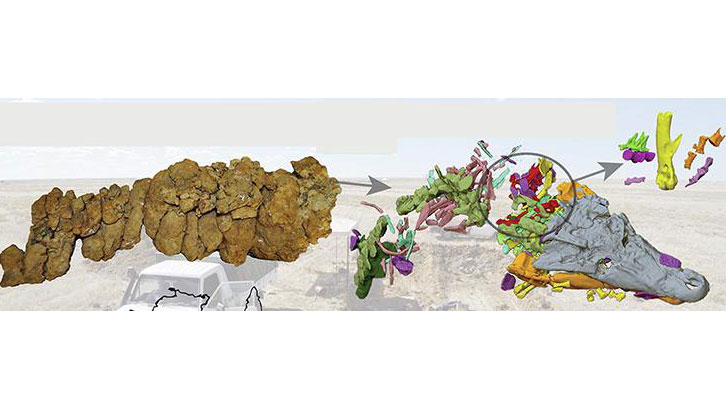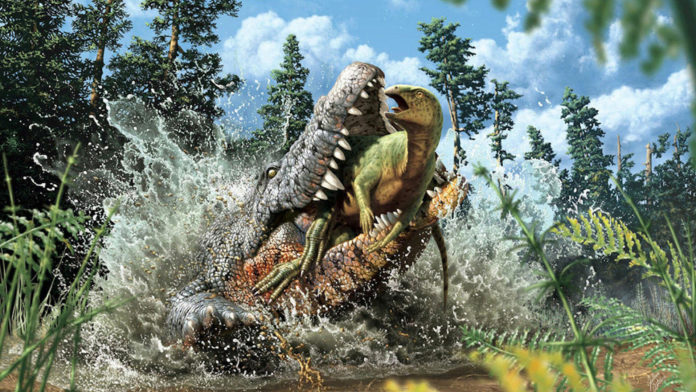In 2010, scientists at the Australian Age of Dinosaurs Museum (QLD) and the University of New England discovered the fossils of crocodiles. Now with ANSTO, scientists performed Advanced nuclear and synchrotron imaging on the fossils.
Scientists excavated the fossilized bones of the crocodile – Confractosuchus sauroktonos – from a sheep station near the Winton Formation in Central Queensland. Their investigation confirmed that the 93-million-year-old crocodile devoured a juvenile dinosaur. They came to a conclusion based on remains found in the fossilized stomach contents.
Confractosuchus sauroktonos is translated as the broken crocodile dinosaur killer. It was about 2 to 2.5 meters in length. It dates back to the Cretaceous period. Broken refers to the crocodile being found in a massive, shattered boulder.
Early neutron imaging scans detected bones that belong to the small chicken-sized juvenile dinosaur. According to scientists, the dinosaur was the last meal of C. sauroktonos.
Senior Instrument Scientist Dr. Joseph Bevitt said, “The dinosaur bones were entirely embedded within the dense ironstone rock and were serendipitously discovered when the sample was exposed to the penetrative power of neutrons at ANSTO.”
“In the initial scan in 2015, I spotted a buried bone in there that looked like a chicken bone with a hook on it and thought straight away that it was a dinosaur.”
Scientists further investigated using Dingo- Australia’s only neutron imaging instrument- and the synchrotron X-ray Imaging and Medical Beamline.

Dr. Bevitt said, “3D digital scans from the Imaging and Medical Beamline guided the physical preparation of the crocodile, which was impossible without knowing precisely where the bones were.”
“The delicate samples had to be carefully reduced to a size that synchrotron X-rays could penetrate for high-quality scanning. The results were outstanding in providing an entire picture of the crocodile and its last meal, a partially digested juvenile dinosaur.”
Later, scientists developed new software mechanisms for processing and merging these fragmented crocodile data sets. In this way, they reconstructed the crocodile as a digital, 3D jigsaw puzzle.
To ensure that the crocodile devoured dinosaurs, scientists observed infilled worm tunnels, plant roots, and geological features that extended between rock fragments. To their surprise, the chemistry of rock provided the evidence.
How did the crocodile die?
According to scientists, the crocodile was caught up in a megaflood event, was buried, and died suddenly.
Dr. Bevitt said, “The fossilized remains were found in a large boulder. Concretions often form when organic matter, or say a crocodile, sinks to the bottom of a river. Because the environment is rich in minerals, within days, the mud around the organism can solidify and harden because of the presence of bacteria.”
Journal Reference:
- Matt A. White et al. Abdominal contents reveal Cretaceous crocodyliforms ate dinosaurs. DOI: 10.1016/j.gr.2022.01.016
